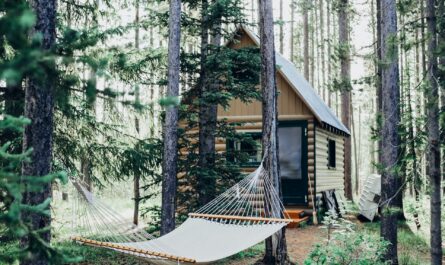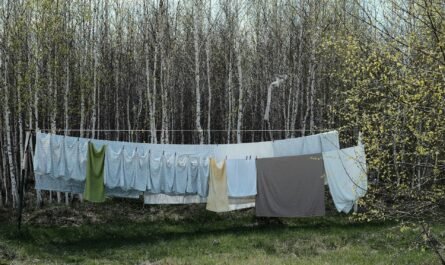Discovering Off-Grid Independence
In a world increasingly connected by technology and dependent on infrastructure, there’s a growing allure to disconnect from it all. Joe Jarvis, with the help of his father, Harry, takes us on a tour of their fully off-grid cabin in Northern Florida. The cabin offers not just an escape from the hustle of modern life but also complete independence—free from the grip of utility companies and supply chains.
Throughout this enlightening video, we follow Joe and Harry’s journey as they build a sustainable, self-sufficient lifestyle. Their cabin is a testament to what’s possible when determination, resourcefulness, and thoughtful planning come together.
The Setup – Small Space, Big Thinking
The off-grid cabin isn’t just a rustic shelter but a fully functional home. Although small in size, it includes:
- A bedroom, bathroom, kitchen, and a screen room to maximize livable space while staying comfortable during Florida’s hot and humid days.
- Their screen room provides airflow and a cool outdoor retreat without relying on air conditioning.
The philosophy behind the design focuses on minimalism, but not deprivation. From solar power to a rainwater collection system, every component works to maximize efficiency while maintaining modern comforts like refrigerators, microwaves, and even air conditioning during sweltering nights.
Sustainable Energy at the Heart of the Cabin
One of the standout features is the solar energy setup. With solar panels providing two kilowatt-hours per day, the cabin generates enough power to run lights, appliances, and essential tools. However, it’s not about unlimited energy; instead, it’s about using energy efficiently.
Harry’s advice? “Use what’s available and don’t overconsume.” The batteries store just enough power to last through cloudy days, and during longer dark spells, a generator stands by as backup.
Water, Filtration, and Comfort
Water independence is achieved through a rainwater collection system. Gutters channel water into barrels and a large IBC tank, where it’s stored for later use. The water passes through three stages of filtration—removing algae, debris, and bacteria—making it safe for brushing teeth and cooking.
When it comes to hot water, the cabin relies on propane-powered water heaters. As a last resort, if propane runs out, there’s always the option of a cold shower—part of the trade-off for freedom.
The bathroom features an eco-friendly composting toilet, eliminating the need for septic tanks and reducing water use. Harry explains that composting human waste turns it into valuable fertilizer, though they still advise against using it on edible crops.
Challenges and Solutions: Managing Off-Grid Life
Living off the grid isn’t without its challenges. Harry likens it to a trade-off—exchanging the ease of municipal services for freedom and sustainability. Routine maintenance includes:
- Checking solar batteries and managing energy loads.
- Emptying the compost toilet and tending to the composting bin.
- Keeping an eye on rainwater levels and ensuring the pump systems stay operational.
However, this lifestyle offers peace of mind. When the grid goes down during storms, the cabin stays operational. No more bills, no disruptions—just self-reliance.
A Different Way of Life – Freedom vs. Convenience
Harry reflects on the freedom this lifestyle brings, drawing comparisons between the independence of their outdoor cat “Sandy” and the caged security of indoor pets. To him, being free—despite occasional discomfort—is worth the effort.
Living off the grid is about balancing independence, comfort, and effort. For Harry and Joe, the freedom to live on their terms, educate children without interference, and avoid reliance on external systems is invaluable.
Off-Grid Self-Sufficient Cabin Tour in Northern Florida
Conclusion: The Takeaways From a Life Off-Grid
From this cabin tour, we learn that living off the grid doesn’t mean sacrificing comfort or modern amenities. It’s about deliberate choices: swapping convenience for freedom and luxury for sustainability. With the right setup, you can enjoy:
- Energy independence through solar power.
- Water sustainability with rain collection systems.
- Composting toilets to reduce waste and conserve water.
- A mindful lifestyle that emphasizes efficiency over excess.
The cabin stands as a model of what’s possible with thoughtful design. For those willing to put in the effort, off-grid living offers peace of mind and genuine independence.
Explore More Off-Grid & Remote Cabin Ideas
Curious about taking your own step into off-grid living? Check out this resource: Off the Grid in Your Cabin Or Cottage – 6 Areas to Master For Marvelous Lake Living. Discover how to disconnect from infrastructure and reconnect with nature.


